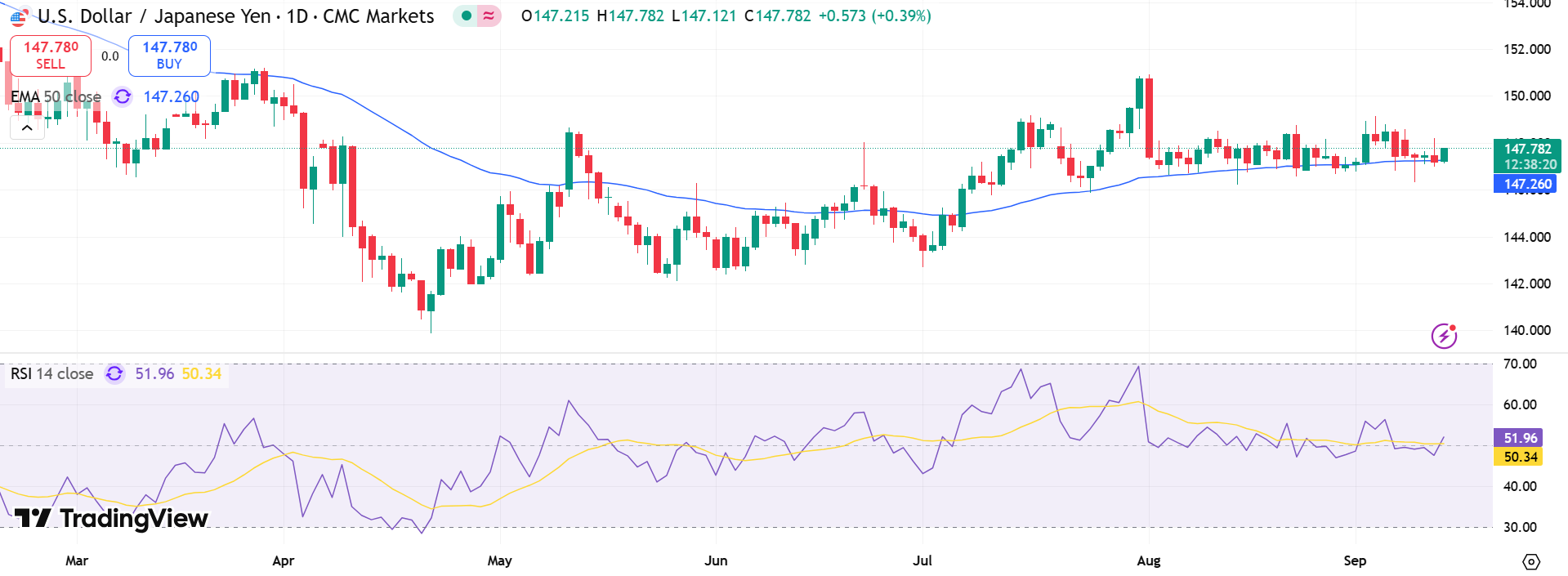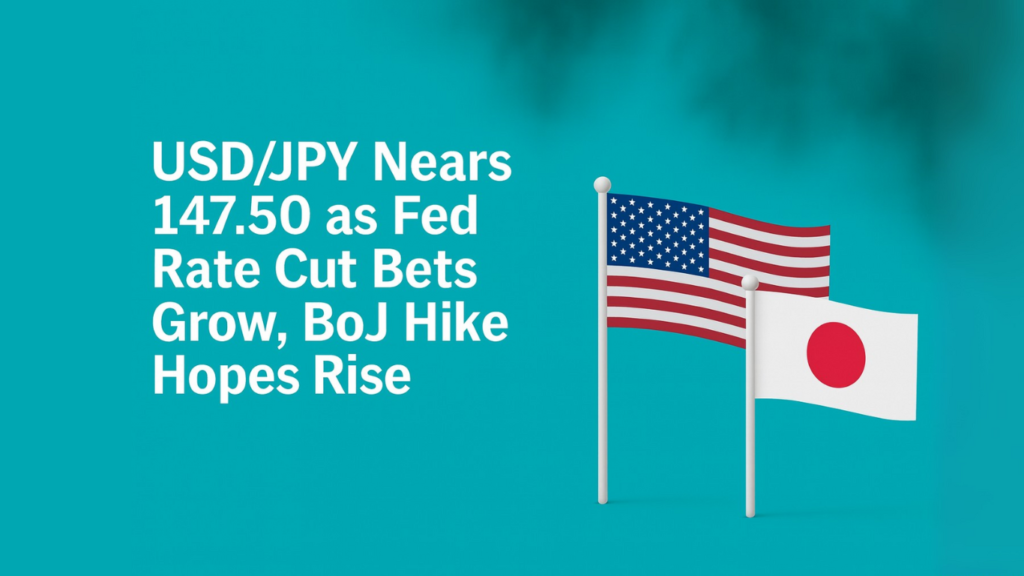The U.S. dollar edged higher against the Japanese yen in Asian trading Friday, with USD/JPY approaching 147.50. The rebound followed a surprise pullback in U.S. inflation, which strengthened expectations for aggressive Federal Reserve easing. Markets are now pricing in three rate cuts before year-end, with some investors betting on a 50-basis-point move at the September 16–17 meeting.
Despite the bounce, the technical picture suggests caution. Momentum indicators remain weak, and a sustained drop below 147.00 could set the stage for declines toward the 146.30–146.20 zone, with further losses potentially extending to 145.00. On the upside, strong resistance is expected near 147.75–148.00, with any breakout likely capped around the 200-day moving average at 148.75.
Japanese Data Supports BoJ Case
Recent Japanese economic data has bolstered the argument for a potential Bank of Japan (BoJ) rate hike by year-end. Producer prices rose 2.7% in August compared with a year earlier, while second-quarter GDP was revised up to 2.2% annualized growth. Household spending and real wages also climbed, the latter marking its first positive reading in seven months.
Business sentiment has improved as well. The Reuters Tankan survey showed manufacturing confidence at its highest in more than three years. Together, these indicators suggest growing resilience in Japan’s economy, strengthening the case for BoJ tightening after years of ultra-loose policy.
Key Japanese figures:
- PPI: +2.7% year-over-year in August
- GDP: +2.2% annualized in Q2 2025
- Household spending: rising trend
- Real wages: positive for first time in 7 months
Fed and BoJ Policy Paths Diverge
The contrast between U.S. and Japanese policy directions is shaping the outlook for USD/JPY. In the U.S., the Bureau of Labor Statistics reported producer prices slowed to 2.6% in August from 3.3% in July. Core PPI also decelerated to 2.8%, far below consensus estimates. The weaker data has reinforced expectations for Fed rate cuts aimed at supporting growth.

While U.S. easing pressures the dollar, the prospect of BoJ tightening offers support for the yen. Yet investors remain cautious ahead of the U.S. Consumer Price Index release later Friday, which will provide clearer signals on Fed policy. Until then, traders are reluctant to commit to aggressive positions in either direction.
The USD/JPY pair is likely to remain range-bound in the near term, with central bank divergence and upcoming inflation data serving as decisive catalysts.


